 Samsung have released a few more details about their new i320 Smartphone, which was unveiled at the 3GSM World Congress in Barcelona.
Samsung have released a few more details about their new i320 Smartphone, which was unveiled at the 3GSM World Congress in Barcelona.
The mean’n’lean, wafer thin, none-more-black smartphone weighs in at a sprightly 95g, with a 2.2″ 262K colour TFT screen offering QVGA (320 x 240 pixels) resolution – a healthy improvement on the Treo 700w’s paltry 240×240 screen.
The pocket-friendly i320 runs on Microsoft Windows Mobile 5.0, and offers the new Direct Push Email functionality via the Messaging & Security Feature Pack when used with Microsoft Exchange Server SP2.
 For a fully featured smartphone, the dimensions aren’t too bulky- 111mm x 59mm x 11.5mm only – so you won’t feel too much of a berk walking around with it stuck to your ear.
For a fully featured smartphone, the dimensions aren’t too bulky- 111mm x 59mm x 11.5mm only – so you won’t feel too much of a berk walking around with it stuck to your ear.
Impressively, there’s a thumping great 120MB of onboard memory with a microSD slot for expansion and a QWERTY keyboard for bashing out short messages.
When it comes to multimedia, the Samsung sports a 1.3 megapixel camera and supports MPEG4 / H.263 / H.264 / WMV video formats and MP3 / AAC / AAC+ / WMA / WAV / OGG audio formats, with dual stereo speakers onboard.
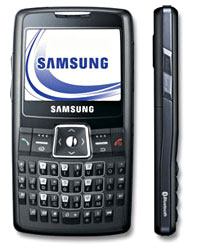 Connectivity comes in the shape of Bluetooth with the tri-band (900/1800/1900) GSM phone capable of GPRS/EDGE but no Wi-Fi as far as we can see – a major omission in our book. Bad Samsung.
Connectivity comes in the shape of Bluetooth with the tri-band (900/1800/1900) GSM phone capable of GPRS/EDGE but no Wi-Fi as far as we can see – a major omission in our book. Bad Samsung.
Samsung i320 is scheduled to arrive in your greasy palms sometime during Q2 of 2006.
Samsung i320 specifications:
Band : GSM 900/1800/1900MHz
Data : EDGE/GPRS
Size : 111mm x 59mm x 11.5mm
Weight : 95g (3.35oz)
Display : 2.2″ 320 x 240 262K Color TFT
OS : Windows Mobile 5 for Smartphone
Camera : 1.3 Megapixel Camera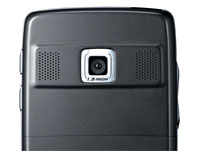 Video : Video capture/playback
Video : Video capture/playback
Messaging : SMS/MMS
Email : Yes (POP/IMAP/SMTP)
Bluetooth : Yes
Infrared : No
Java : Yes
Polyphonics : Yes
Memory : 120MB User Memory, External Memory (microSD)
Features : QWERTY Keyboard, Video Recording & Messaging (MPEG4/H.263), Video Playing (MPEG4/H.263/H.264/WMV), MP3 / AAC / AAC+ / WMA / WAV / OGG, Dual Speaker / Speakerphone, Bluetooth Technology / USB / Voice Recognition, Document Viewer
 With PMA 2006 (Photo Marketing Association International) looming ever closer on the horizon, there’s been a flurry of new camera announcements, and of real interest is Fujifilm’s successor the award-winning
With PMA 2006 (Photo Marketing Association International) looming ever closer on the horizon, there’s been a flurry of new camera announcements, and of real interest is Fujifilm’s successor the award-winning 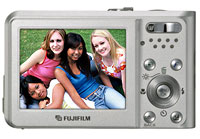 The camera comes with a 3x (36-108mm equiv) F2.8-8 zoom and uses a sixth generation Super CCD and Fujifilm’s groundbreaking Real PhotoProcessor II.
The camera comes with a 3x (36-108mm equiv) F2.8-8 zoom and uses a sixth generation Super CCD and Fujifilm’s groundbreaking Real PhotoProcessor II.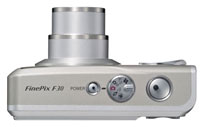 As with the F11, the camera boasts a sizeable 2.5-inch LCD screen, coated with Fujifilm’s proprietary CV film for reducing glare and reflection.
As with the F11, the camera boasts a sizeable 2.5-inch LCD screen, coated with Fujifilm’s proprietary CV film for reducing glare and reflection. We like the addition of a dedicated exposure compensation button on the back of the camera as we found some functions on the F11 to be annoyingly buried deep in menus.
We like the addition of a dedicated exposure compensation button on the back of the camera as we found some functions on the F11 to be annoyingly buried deep in menus.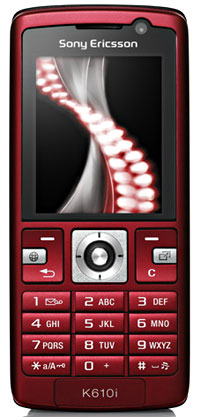 Sony Ericsson has slipped out is slimmest-ever 3G handset at the 3GSM conference in Barcelona, Spain.
Sony Ericsson has slipped out is slimmest-ever 3G handset at the 3GSM conference in Barcelona, Spain.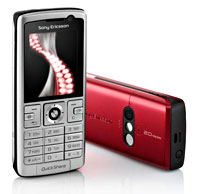 Naturally, there’s an integrated music player lurking inside the rounded lines of the K610, with supported formats including MP3, AAC and e-AAC+.
Naturally, there’s an integrated music player lurking inside the rounded lines of the K610, with supported formats including MP3, AAC and e-AAC+.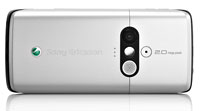 Sony Ericsson K610i Specs:
Sony Ericsson K610i Specs: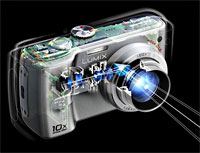 Panasonic have released two additions to their popular Lumix digital camera range which the company are claiming are the world’s smallest in their categories.
Panasonic have released two additions to their popular Lumix digital camera range which the company are claiming are the world’s smallest in their categories. The 5 megapixel camera comes with Panasonic’s well regarded optical image stabilisation system (you’ll definitely need that at the far end of its monster zoom) and sports the newly developed Venus Engine III, offering quick response times and an improved battery life (250 shots).
The 5 megapixel camera comes with Panasonic’s well regarded optical image stabilisation system (you’ll definitely need that at the far end of its monster zoom) and sports the newly developed Venus Engine III, offering quick response times and an improved battery life (250 shots). After the dire high ISO performance of the Lumix flagship model,
After the dire high ISO performance of the Lumix flagship model, 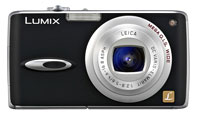 There’s also 13.4 MB of internal memory onboard, a SD/MMC card slot and a 2.5-inch, 207k pixel TFT LCD.
There’s also 13.4 MB of internal memory onboard, a SD/MMC card slot and a 2.5-inch, 207k pixel TFT LCD.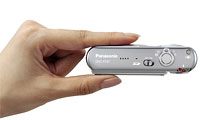 The f/2.8, Leica zoom lens gives users a handy wideangle range of 28-102mm equiv., and the camera come with the usual smorgasbord of scene modes for every conceivable occasion.
The f/2.8, Leica zoom lens gives users a handy wideangle range of 28-102mm equiv., and the camera come with the usual smorgasbord of scene modes for every conceivable occasion.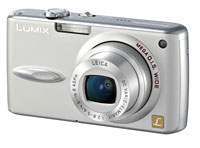 The camera is also expected to be out in March for $349.95.
The camera is also expected to be out in March for $349.95.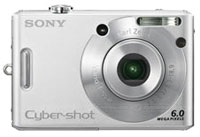 Ahead of the big PMA (Photo Marketing Association International) show at the end of the month in Florida, Sony has announced two new 6-megapixel cameras in their ‘W’ range.
Ahead of the big PMA (Photo Marketing Association International) show at the end of the month in Florida, Sony has announced two new 6-megapixel cameras in their ‘W’ range.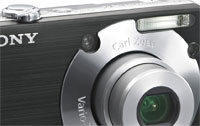 Looking somewhat reminiscent of the Canon Ixus / Elph range, the miniaturised, re-engineered W-series offers a compact, highly pocketable design (89x59x23mm) with a price that’s easy on the pocket too, with the DSC-W30 retailing for $230 (~£132, ~e193) and the DSC-W50 for $250 (~£143, ~e209).
Looking somewhat reminiscent of the Canon Ixus / Elph range, the miniaturised, re-engineered W-series offers a compact, highly pocketable design (89x59x23mm) with a price that’s easy on the pocket too, with the DSC-W30 retailing for $230 (~£132, ~e193) and the DSC-W50 for $250 (~£143, ~e209).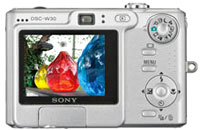 At higher ISO ratings noise can become a real issue, but Sony are claiming that their Clear RAW imaging technology keeps the multi-colour snow-storm effect to a minimum.
At higher ISO ratings noise can become a real issue, but Sony are claiming that their Clear RAW imaging technology keeps the multi-colour snow-storm effect to a minimum.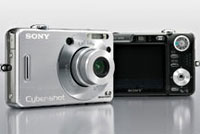 To help fumbling newbies and the easily baffled, Sony has added a new function guide which displays a short onscreen text explanation whenever a shooting mode is selected. This can be turned off once the user becomes familiar with the icons on the mode dial.
To help fumbling newbies and the easily baffled, Sony has added a new function guide which displays a short onscreen text explanation whenever a shooting mode is selected. This can be turned off once the user becomes familiar with the icons on the mode dial.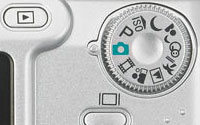 Scene modes Twilight, Twilight Portrait,Landscape,Beach,Snow,Soft Snap
Scene modes Twilight, Twilight Portrait,Landscape,Beach,Snow,Soft Snap For the second time in a fortnight, coastguards have been scrambled after a digital TV box sent out a signal on a wavelength used by ships in distress.
For the second time in a fortnight, coastguards have been scrambled after a digital TV box sent out a signal on a wavelength used by ships in distress.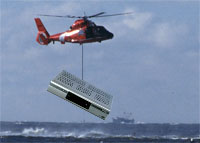 An Ofcom spokesman explained that the faulty boxes are now being examined for malfunctioning components, adding: “Apparently any device capable of receiving a signal can also send a signal if it malfunctions. To the best of our knowledge these are the only two out of millions of Freeview users in the UK to have experienced this problem.”
An Ofcom spokesman explained that the faulty boxes are now being examined for malfunctioning components, adding: “Apparently any device capable of receiving a signal can also send a signal if it malfunctions. To the best of our knowledge these are the only two out of millions of Freeview users in the UK to have experienced this problem.”